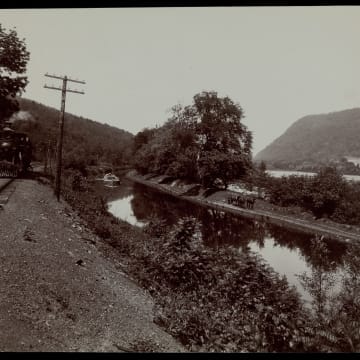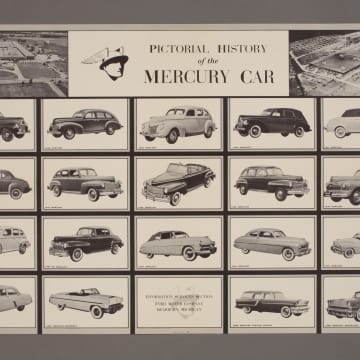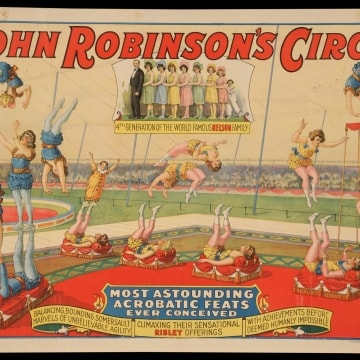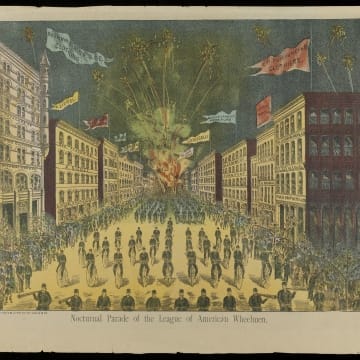You can select the language displayed on our website. Click the drop-down menu below and make your selection.

The experts at The Henry Ford have carefully created these sets. Explore a specific topic or use these as a foundation for building your own collection.

Created 11.19.2025 | 10 artifacts
There are myriad ways that we honor and preserve the memory of those we hold dear. Below is just a small sampling that shows how Americans have mourned and memorialized, from the colonial era until today.

Created 09.15.2025 | 34 artifacts
In the early 19th century, Americans looked to canals for transportation. Artificial waterways carried people and goods over long distances with minimal power, extending water-borne commerce from seaports to inland communities. But canals were expensive to build and maintain, and floods, droughts and freezing weather interfered with operations. Railroads offered a better alternative and brought an end to America's canal era.

Created 08.05.2025 | 26 artifacts
Ford Motor Company introduced Mercury for 1939. The mid-price make fit neatly between the economical Ford and the extravagant Lincoln, and it broadened the company's product range to better compete with General Motors and Chrysler. In the decades that followed, Mercury offered distinctive sedans, station wagons, muscle cars, and minivans. But the 21st century brought slowing sales and shifting priorities, and Mercury was discontinued in 2011.

Created 08.01.2025 | 19 artifacts
Between 1870 and 1930, the circus was one of the most popular forms of American popular entertainment. Showmen like Phineas Taylor "P.T." Barnum, James Bailey and the Ringling brothers traveled across the United States and the world. They brought death-defying stunts, exotic animals, and fun to audiences everywhere. This collection of circus posters highlights the many facets of the Golden Age of the circus.

Created 07.03.2025 | 15 artifacts
In the late 1800s, cyclists faced many challenges. Poor road conditions made travel difficult, and even on passable roads, cyclists found themselves unwanted. Wagon and carriage drivers thought bicycles and bicyclists frightened their horses, while others believed cyclists posed a danger to pedestrians. In 1880, several cycling clubs formed the League of American Wheelmen to advocate for bicyclists' rights.

Created 05.06.2025 | 25 artifacts
In the 19th century, bicycles introduced Americans to the power of personal transportation. Early two-wheel vehicles set the pattern. High-wheelers carried riders faster and farther. Chain-driven safety bikes fueled a late-century bicycle boom. When that boom went bust, children kept riding until adults rediscovered biking's benefits in the late 20th century. This set features highlights from The Henry Ford's collection of bicycles.

Created 02.07.2025 | 12 artifacts
In August 2024, The Henry Ford welcomed the donation of hundreds of objects, an archive, and library from the Stewart Program for Modern Design in Montreal, Canada. Acquired over decades through the careful selections of founder Liliane Stewart and her staff, the Stewart Collection spans over 140 years of design history and represents the work of hundreds of designers. The following selection offers a glimpse into this seminal collection.

Created 02.07.2025 | 12 artifacts
Sheep supply two items essential for human survival, wool for clothing and meat for food. This makes them a farm asset, but protecting sheep requires vigilance. Sheep are social animals with an instinct to move together as a flock. Shepherds use dogs to help protect their flock and herd animals from pens to pasture and back. The close bond conjures visions of a bucolic rural past, emphasizing human-animal relationships.

Created 11.04.2024 | 12 artifacts
The Pennsylvania Germans, popularly known as the Pennsylvania "Dutch," were a vibrant immigrant community active in southeastern Pennsylvania in the late 18th and early 19th centuries. The Henry Ford has a rich collection of objects that show the Pennsylvania Germans' flamboyant, whimsical, playful, and highly imaginative artistic style. These pieces are a few of the highlights.